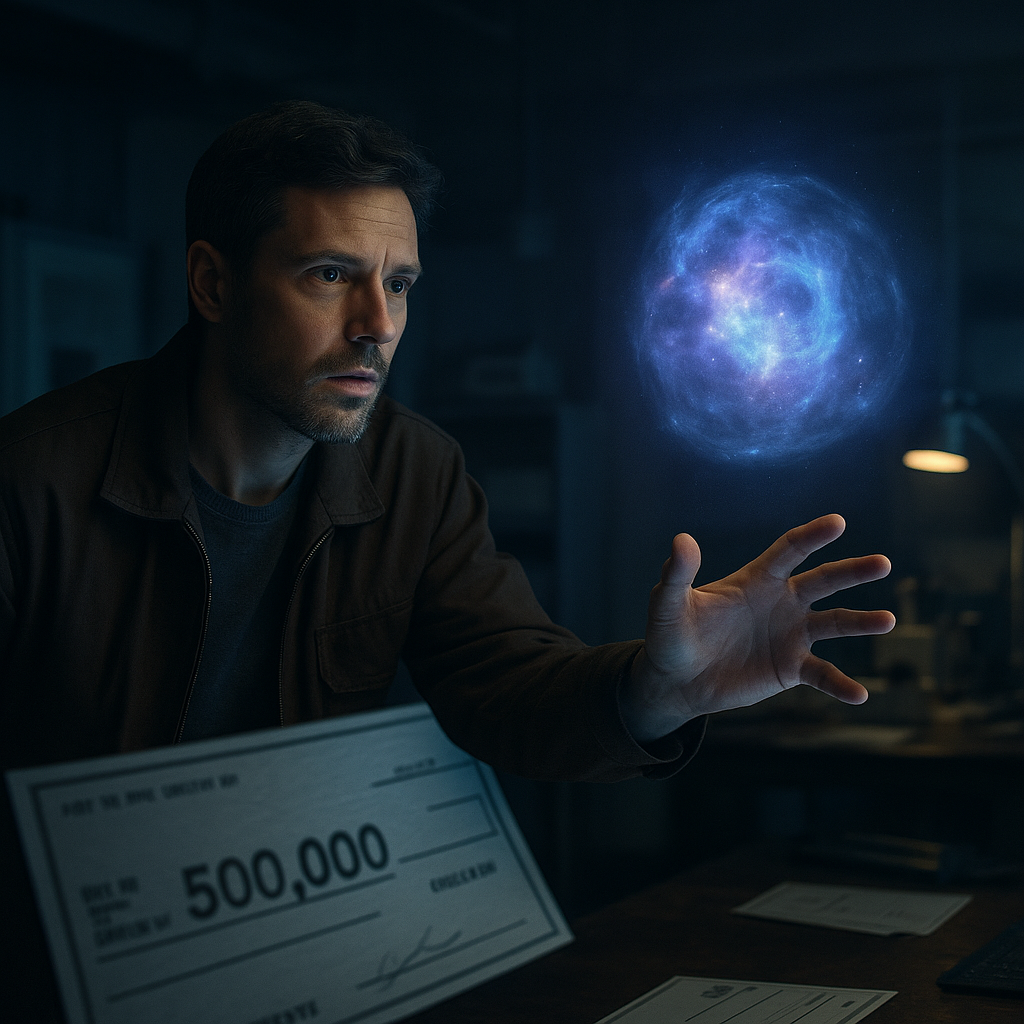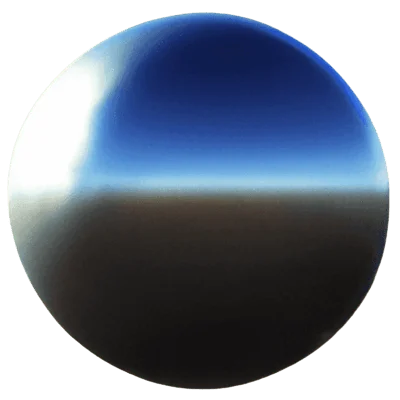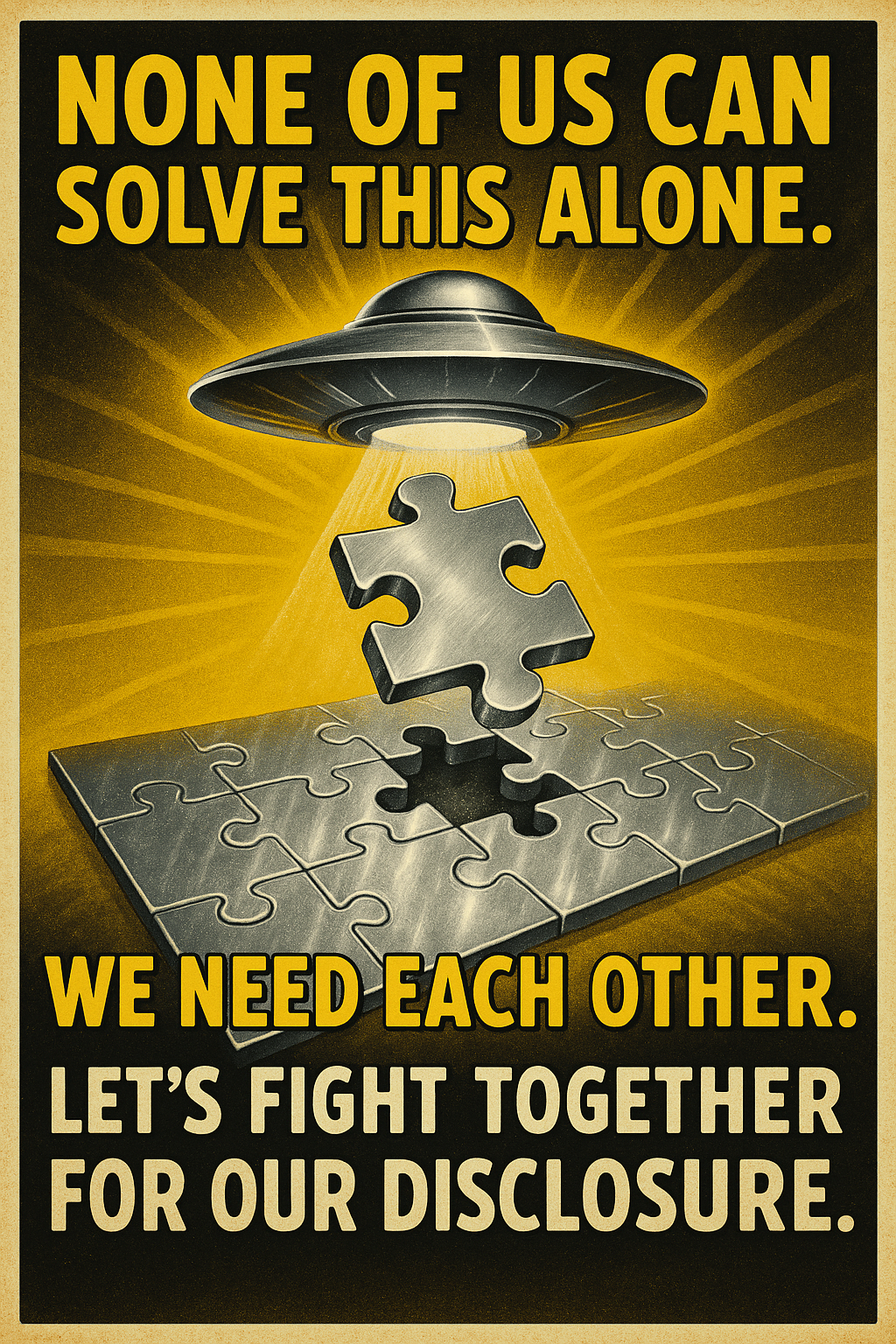The $500,000 Paranormal Challenge: What If the Truth Can’t Be Measured (Yet)?

We live in a world where many believe that everything real must be measurable, provable, and repeatable. But science itself—though powerful—is incomplete. Not all sciences are known, and not all that is known is shared. Entire branches of research remain classified or proprietary, tucked away in government labs or corporate vaults. We don’t know what we don’t know, and that ignorance is often masked by the illusion of total knowledge.
The average human has an incredibly hard time grasping dimensions they cannot directly perceive. We stream invisible data through the air to our phones without giving it a second thought. GPS works by syncing up with satellites in space. We take medicines made to interact with microbial and molecular structures we’ve never seen. Quantum mechanics doesn’t follow everyday logic, but it still runs your hard drive, your phone, and just about every modern device you trust without blinking. Wi-Fi, radiation, DNA editing—most of it functions on a scale or in a frequency range our senses were never built to detect. And yet we believe in these systems, trust them even, because someone said they work. When it comes to the paranormal, the same leap of trust is rarely given—even though it may involve layers of perception we haven’t learned to measure yet.
“Think you have a paranormal ability? Prove it and earn $500,000.” That’s the bold headline from the Center for Inquiry Investigations Group (CFIIG), which has apparently put ‘reel money’ on the table for anyone who can scientifically demonstrate supernatural or paranormal powers. Officially, they describe the process as fair and collaborative, promising custom testing protocols and respectful treatment. However, the tone of the application form tells a different story. Right from the start, it warns applicants they may face personal embarrassment, that others have failed, and that all travel expenses must be covered by the claimant. The form also grants the organization indefinite rights to use recordings of the test, and warns those claiming telepathy that their experience may stem from a mental illness. Rather than feeling like an open-minded inquiry, the application reads like a legal waiver focused on institutional protection—not like an invitation to discovery.
But this raises a deeper question—one that no application form or double-blind protocol can quite capture: What if something is genuinely real, but not reliably repeatable by nature? What if the truth exists outside of controlled conditions, surfacing only under unpredictable, human, emotional, or spiritual circumstances? There are many things in science where the very act of observation or measurement alters the outcome. In quantum physics, this is known as the observer effect—where measuring a particle changes its state. The attempt to control, repeat, or quantify a phenomenon can shift or erase what was originally there. In this way, chasing repeatability sometimes costs us the very truth we’re trying to validate.
Science is our most powerful tool for understanding the physical world. It thrives on consistency, control, and reproducibility. Drop a rock from a roof, and it falls. Every time. But what happens when something doesn’t show up on cue? What if you’ve experienced a moment of telepathy, clairvoyance, or energy healing that changed your life but you’ve never been able to recreate it under pressure, in a strange room, under observation?
Does that make it not real?
The CFIIG challenge is a box. A well-built box, sure, but still a box. You have to fit your phenomenon inside its walls: clearly defined, repeatedly demonstrable, measurable in a set time, and with no room for ambiguity. And for many phenomena, especially those of a personal, spiritual, or psychological nature, that’s just not how they show up. They’re spontaneous. They bubble up during moments of stress or clarity, trauma or grace, maybe not when a clipboard asks them to.
Think about déjà vu, lucid dreams, or sudden premonitions. Do they really operate on a schedule? Could Mozart have proven divine inspiration if someone demanded he compose in a lab, on command, while being filmed?
One of the most common lines from debunkers is: “If you say you’re psychic, then prove it and collect the bounty.” But let’s apply that same logic to science’s all-stars. Would Isaac Newton have been able to reproduce his insights under fluorescent lights with a clipboard in his face? Would Charles Darwin have convinced a skeptical panel by sketching finches in real time? Could Albert Einstein have generated general relativity under lab observation? How about Hermann Oberth’s dreams of rocketry, or Francis Crick’s visions of DNA—both of which came through inspiration, not demonstration? Edward Teller, father of the hydrogen bomb, was accused of madness more than once. Most of these figures worked in solitude, across decades, driven by intuition, obsession, and something that doesn’t show up on demand. They weren’t testing magic tricks—they were chasing glimpses of something just barely visible. Would they have passed the Paranormal Challenge? Not a chance. But history still crowned them visionaries.
Even the application itself is blunt: you may suffer personal embarrassment. Beyond that, there are several valid reasons why someone might avoid participating at all. For one, the application warns telepathy claimants that their experiences could be symptoms of a mental disorder, which may deter people who fear being misunderstood or pathologized. Others may come from spiritual or cultural traditions where sacred knowledge isn’t meant to be demonstrated publicly or commodified through testing. There’s also the issue of trust—some believe the challenge is designed more to debunk than to discover. Add in the requirement to cover your own travel costs, sign off on indefinite use of your image and words, and risk public ridicule online, and the process begins to look less like a fair scientific trial and more like a one-sided audition. The power imbalance is real, and not everyone is willing to hand over their dignity in exchange for the chance to ‘prove’ something that may not even want to be proved.
From the very start, the tone of the official application is cautionary and a bit cold. It warns applicants about potential embarrassment, reminds them that others have failed before, and places the financial burden for travel and testing on the claimant. While this might be meant to ensure seriousness and deter hoaxes, it can also feel discouraging to someone with a sincere but hard-to-define experience. The document reads more like a legal waiver than an invitation, framing the process with skepticism rather than curiosity.
For many who operate at a higher vibration of consciousness, the idea of chasing money becomes irrelevant. These individuals aren’t driven by a desire for fame or cash—they’re motivated by compassion, healing, and a desire to help others. The notion of performing sacred or personal experiences for a monetary prize may feel degrading, even offensive. Their priority isn’t validation—it’s service.
And here’s where we hit the real crux. Reality isn’t always repeatable. Anyone who has lost a loved one and felt their presence during grief knows this. You can’t summon it again for a panel of judges. But you felt it. You know it. And to you, it was as real as gravity.
Looking at the broader picture, history shows us that phenomena once considered paranormal—like magnetism, out-of-body experiences, and even the placebo effect—have found scientific footing over time. These examples remind us that today’s mysteries can become tomorrow’s science as methods and perspectives evolve. But it’s also worth noting that not all science fits the public model of peer review and repeatable experiments.
Some of the greatest scientific insights began in personal journals, far removed from institutional labs. Newton, Darwin, and Tesla all developed radical ideas in isolation before anyone was ready to listen. Today, much of science is funneled through corporate or classified research, using proprietary methods and closed frameworks. That doesn’t make the results any less scientific—it just means they’re not always visible or shareable. These hidden branches of research still use rigorous logic and innovation, even if the world never sees their data.
Meanwhile, the Bible remains a document of enormous influence, offering a radically different framework for understanding reality. Its stories, symbols, and moral codes shape how billions interpret the world. It speaks in metaphor, in myth, in archetype—channels that science often overlooks. Just because something uses a different lens doesn’t mean it’s blind.
This tension between belief and measurement underscores the dynamic edge of our understanding. Science itself is not a monolith—it spans across Natural, Social, and Formal branches, each with different goals and tools. New interdisciplinary fields, like Environmental Science and Cognitive Science, are emerging all the time, proving that scientific classification is flexible, not fixed. Practices like mathematics or logic, which belong to the Formal Sciences, often serve as the foundation for breakthroughs in more empirical domains, showing how layered and interwoven science truly is.
At the same time, modern science faces internal challenges. Peer review can be slow, biased, and sometimes driven more by academic gatekeeping than open inquiry. Journal access is restricted by costly subscriptions, while corporate publishing prioritizes profit over reach.
Then there’s proprietary science—entire research pipelines kept secret for commercial reasons. Think pharmaceuticals, biotech, aerospace. These projects often use entirely different methodologies or goals, and while they’re rigorously executed, their findings may never see daylight. Still, they push the boundaries of knowledge in their own hidden way. Innovation doesn’t stop just because it’s not peer-reviewed.
And across the aisle, religion—especially texts like the Bible—operates on a wholly different framework. Faith-based, symbolic, focused on meaning and morality rather than cause and effect. But it, too, seeks to explain existence. While conflicts can arise when one tries to replace the other, many have found a way to integrate both. Science asks “how,” faith asks “why.” And sometimes, you need both lenses to see the full picture.
Still, there’s something noble in putting the unexplained to the test. That said, it’s worth remembering that there are thousands of photos and videos documenting UFOs, beings, and other paranormal events—evidence that many believe speaks for itself. These aren’t one-off tales; they come from pilots, police officers, and people around the world who have no incentive to fabricate. But maybe the real value of these trials isn’t in proving anything, but in having the guts to show up. To say, I experienced something. I’m not crazy. I’m not ashamed. I’m open to learning what it really was.
And maybe that’s what makes something truly paranormal. It resists being boxed, even by science.
So go ahead, fill out the form. Or maybe don’t. Just remember that some of the most revolutionary minds in history—Einstein, Newton, Darwin, Crick—wouldn’t have passed this kind of test either. Not because their ideas were untrue, but because great truths often arrive before their methods do. Some science is hidden. Some is still being born. Some truths don’t fit the rules we’ve written. And some truths are bigger than proof.


